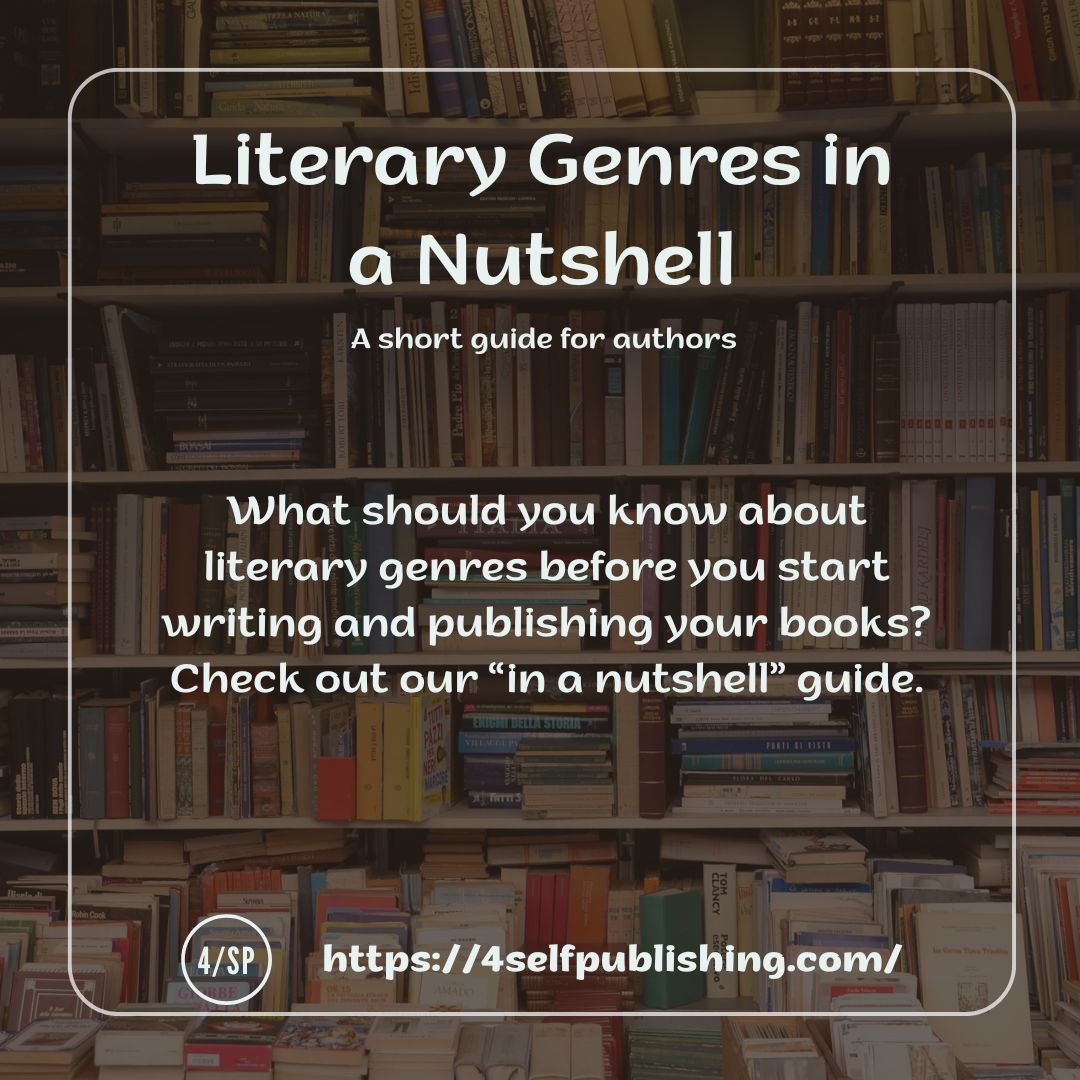
Every author, before they start writing books, is a reader. In school, teachers taught about three main literary types: epic, lyric, and drama. These divide into genres, of which there are many.
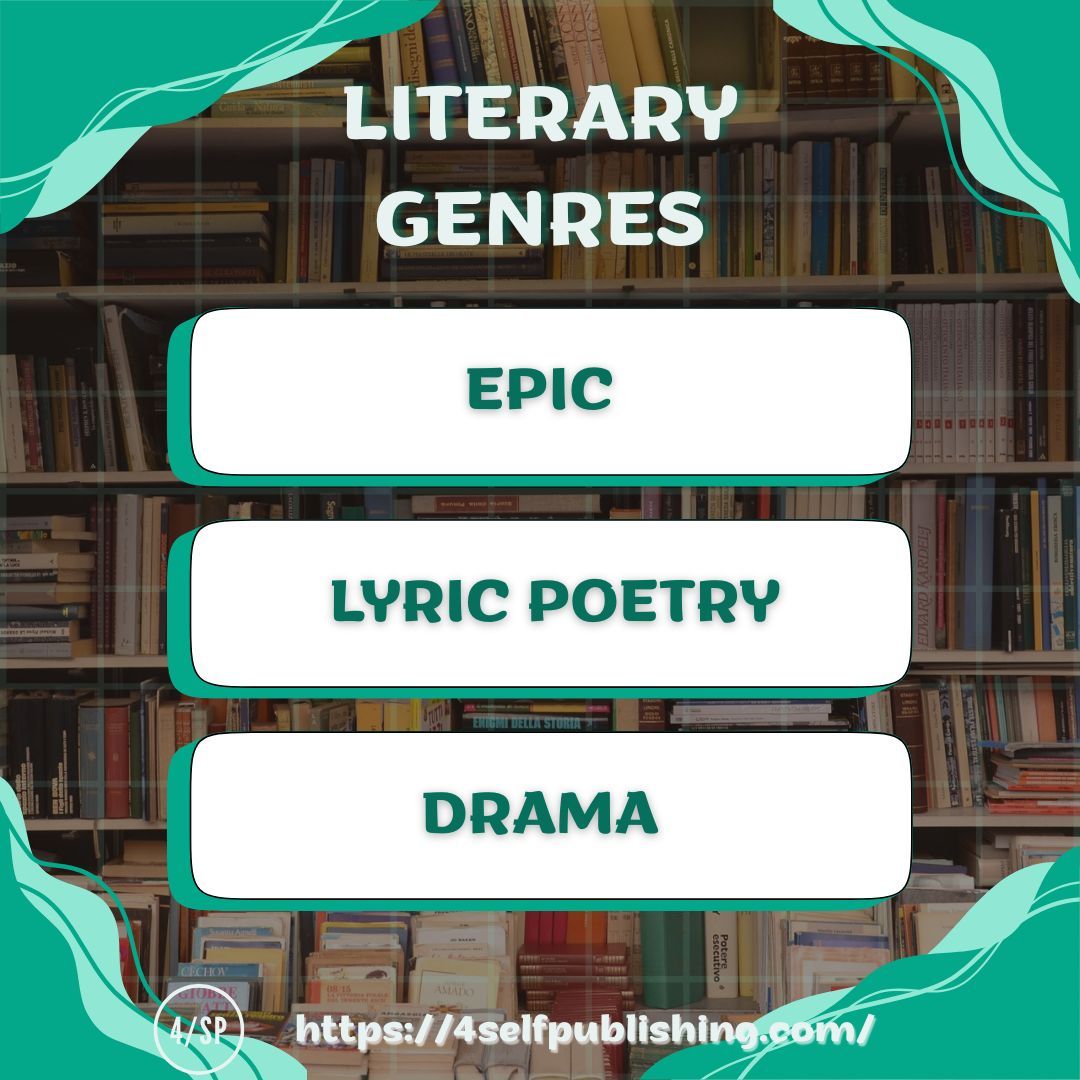
In this article, we will briefly discuss the most popular literary genres. Remember, however, that their richness does not end here. We will describe some briefly to show you the variety of genres you can choose from and write in. Everything depends on your creative ingenuity, creativity, and... knowledge.
Epic
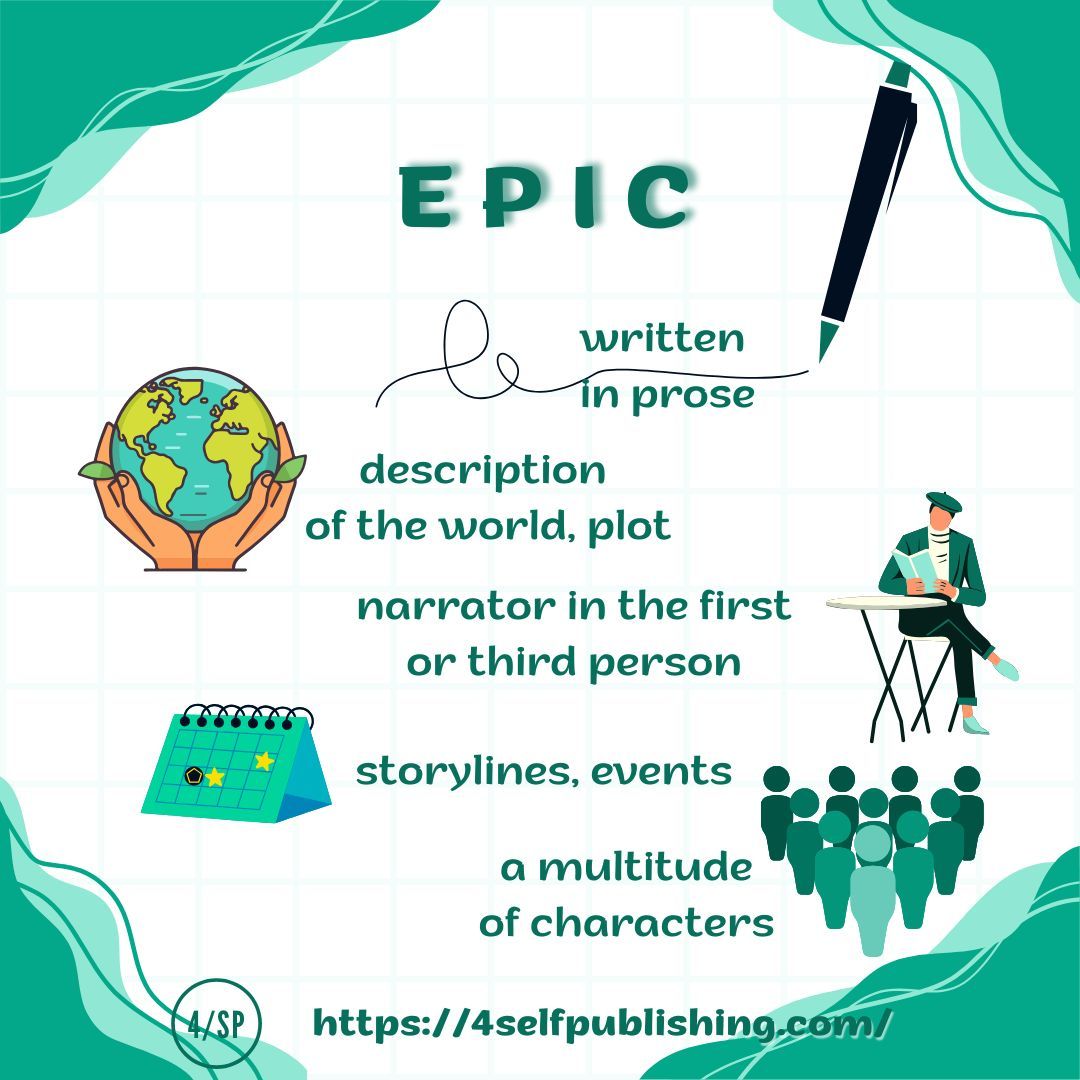
These are literary works usually written in prose. They feature a narrator, who speaks in the first or third person, describes the world, the plot, and presents storylines and events. In epics, there are heroes, and there can be many of them.
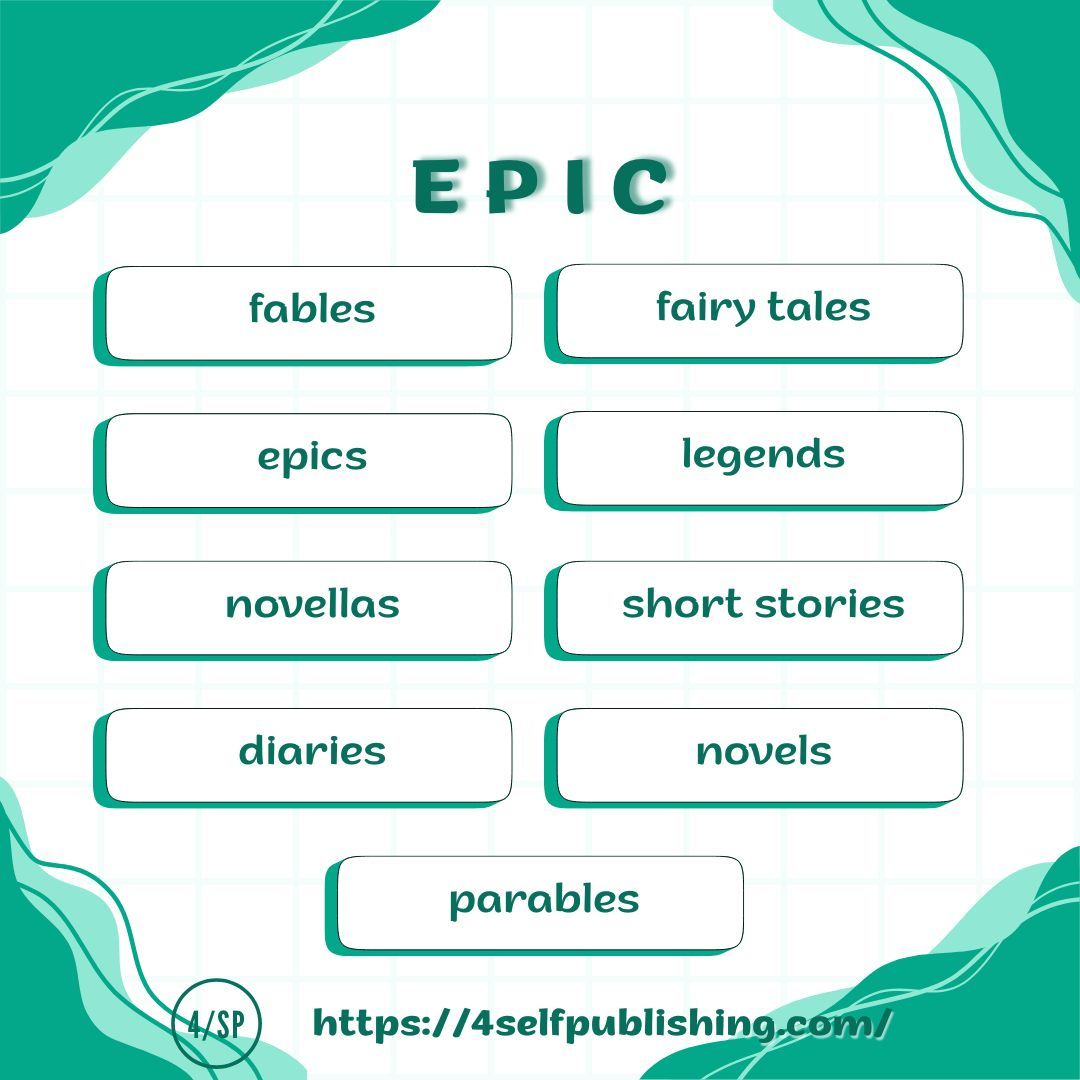
Below you will find some genres belonging to epic works and their characteristics:
- Fables – often featuring animals as characters;
- Fairy tales – containing fantastic elements;
- Epics – depicting heroic deeds of real persons – heroes (sometimes portrayed as perfect, ideal humans) and important national or historical events;
- Legends – stories set in old times, grounded in cultural or historical realities, enriched with fantastic or supernatural elements;
- Novellas – short forms focused on one plot or event, containing the climax of the work;
- Short stories – shorter than novellas, with minimal plot and few characters;
- Diaries – personal records of experiences and thoughts, often describing everyday life;
- Novels – featuring complex plots, detailed character descriptions, many storylines, and can be science fiction, historical, social, psychological, adventure, fantasy, crime, thriller, biographical, social novels (and more);
- Parables – short stories with three levels of meaning (literal, symbolic, and didactic; also called literal, allegorical, and moral).
Lyric
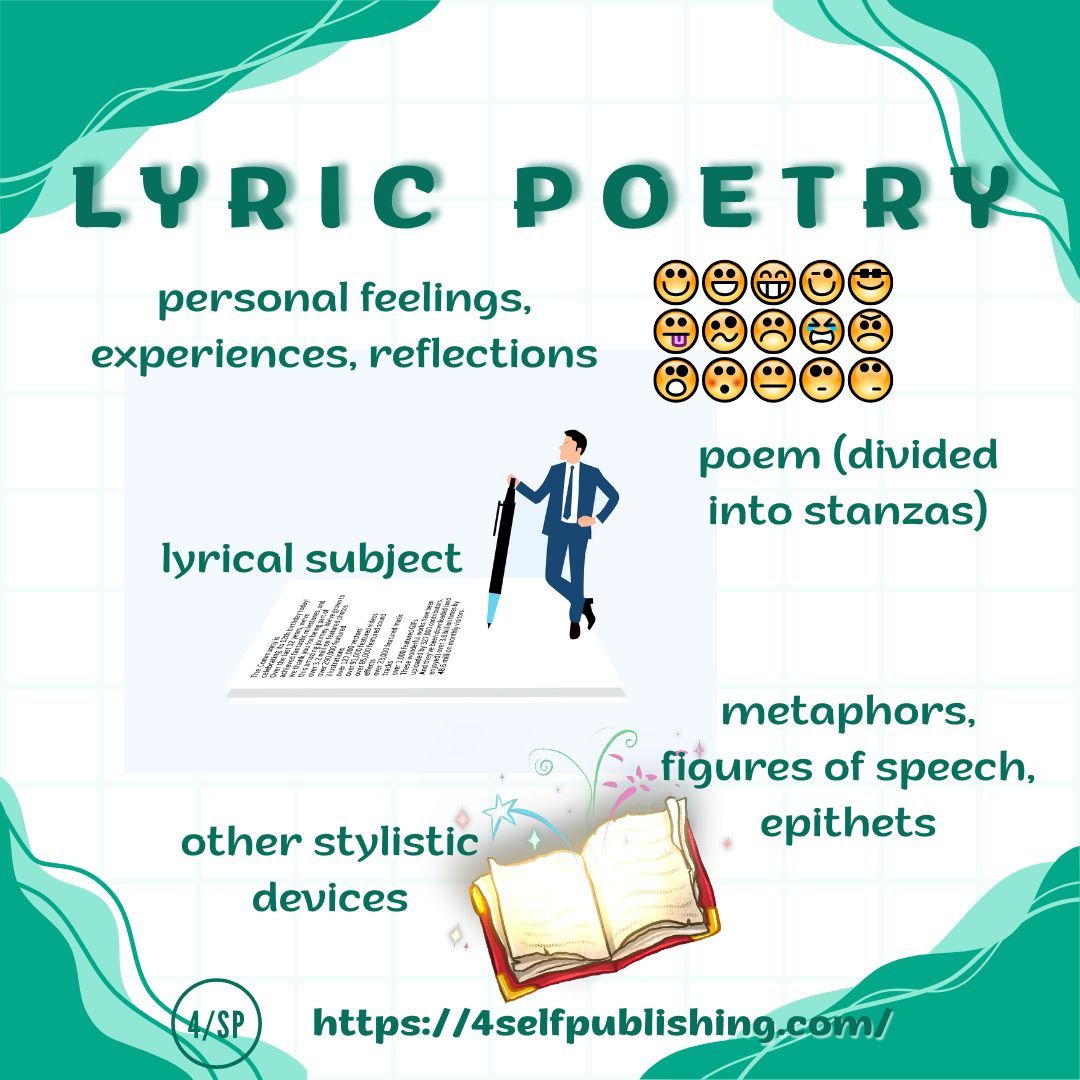
These are works describing personal feelings, experiences, moods, and thoughts of the lyrical subject. Lyric works are written in verse and may be divided into stanzas. The language is rich in metaphors, similes, epithets, and other stylistic devices.
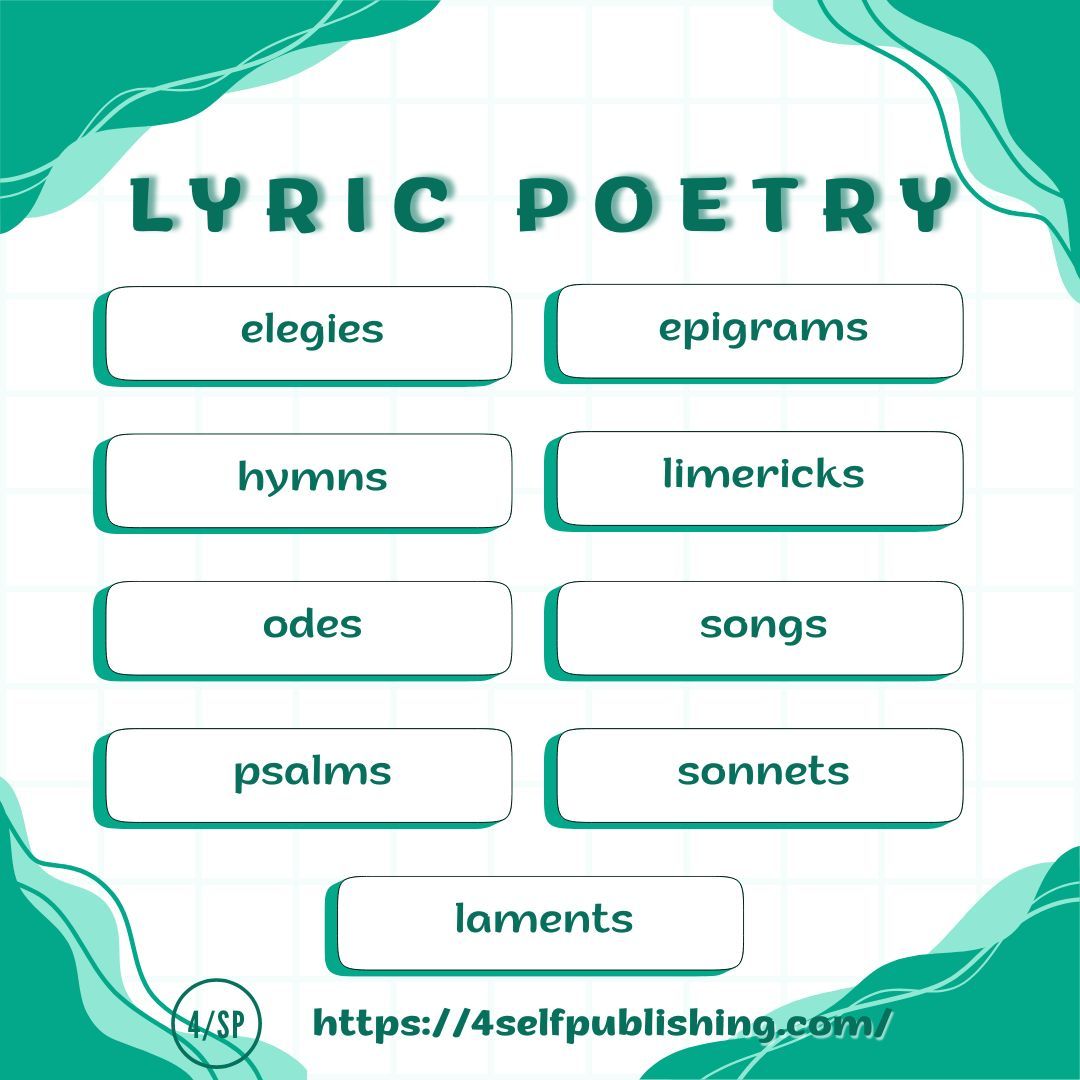
Among lyric genres, we distinguish:
- Elegies – expressing grief and reflections on passing;
- Epigrams – short, humorous works addressing everyday matters with irony and humor;
- Hymns – having a solemn style and written in honor of gods or heroes;
- Limericks – humorous, absurd poems with an AABBA rhyme scheme;
- Odes – works created to honor important events, people, or ideas;
- Songs – addressing serious themes, containing stanzas and refrains, often linked with music;
- Psalms – religious works directed to God, expressing praise, gratitude, or requests;
- Sonnets – 14-line poems with a specific rhyme scheme;
- Threnodies – mourning poems expressing grief over the loss of a loved one.
Drama
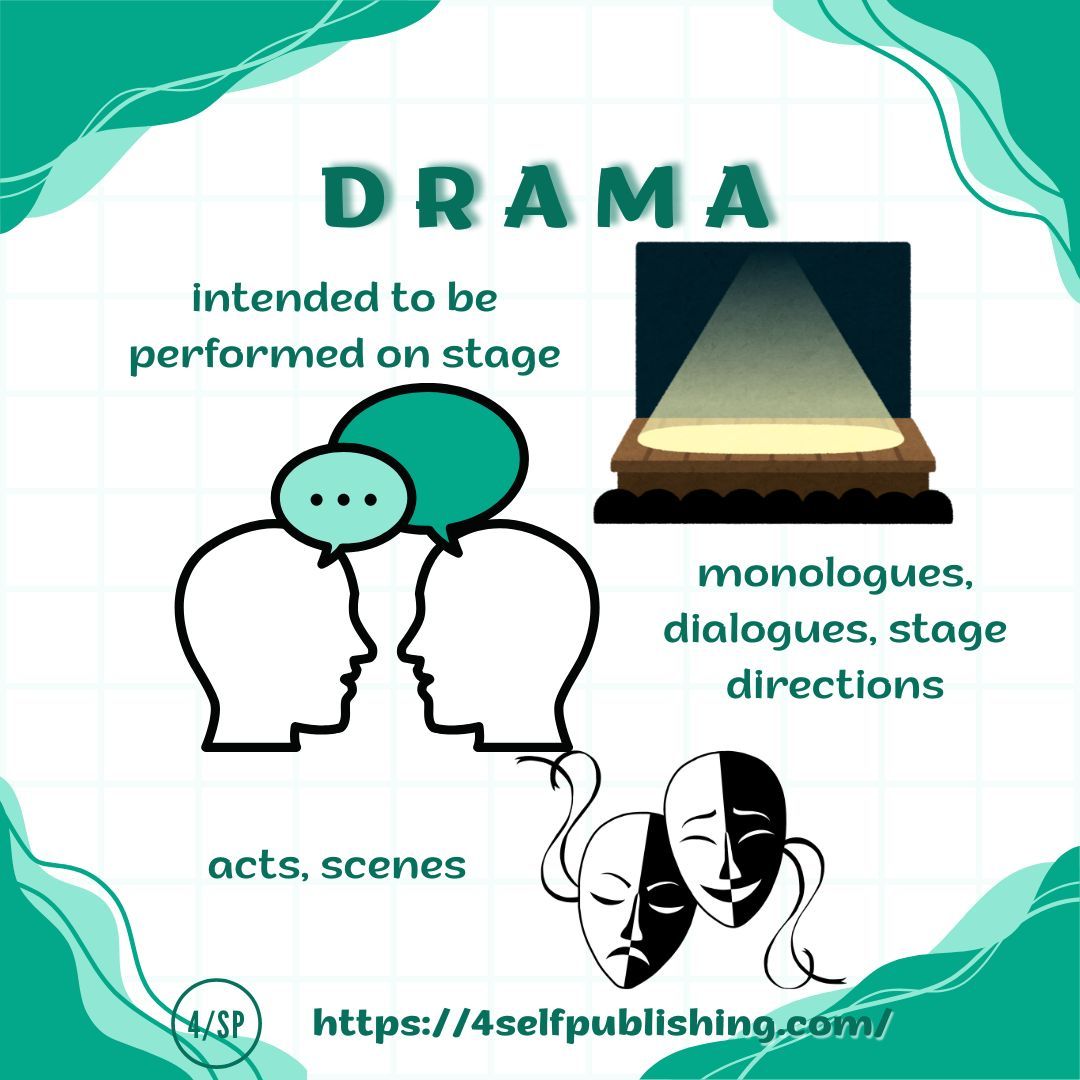
Dramas are works intended for performance on stage. The text consists of monologues, dialogues, and stage directions (didaskalia), which are instructions for the director. The entire text is divided into acts, and acts into scenes.
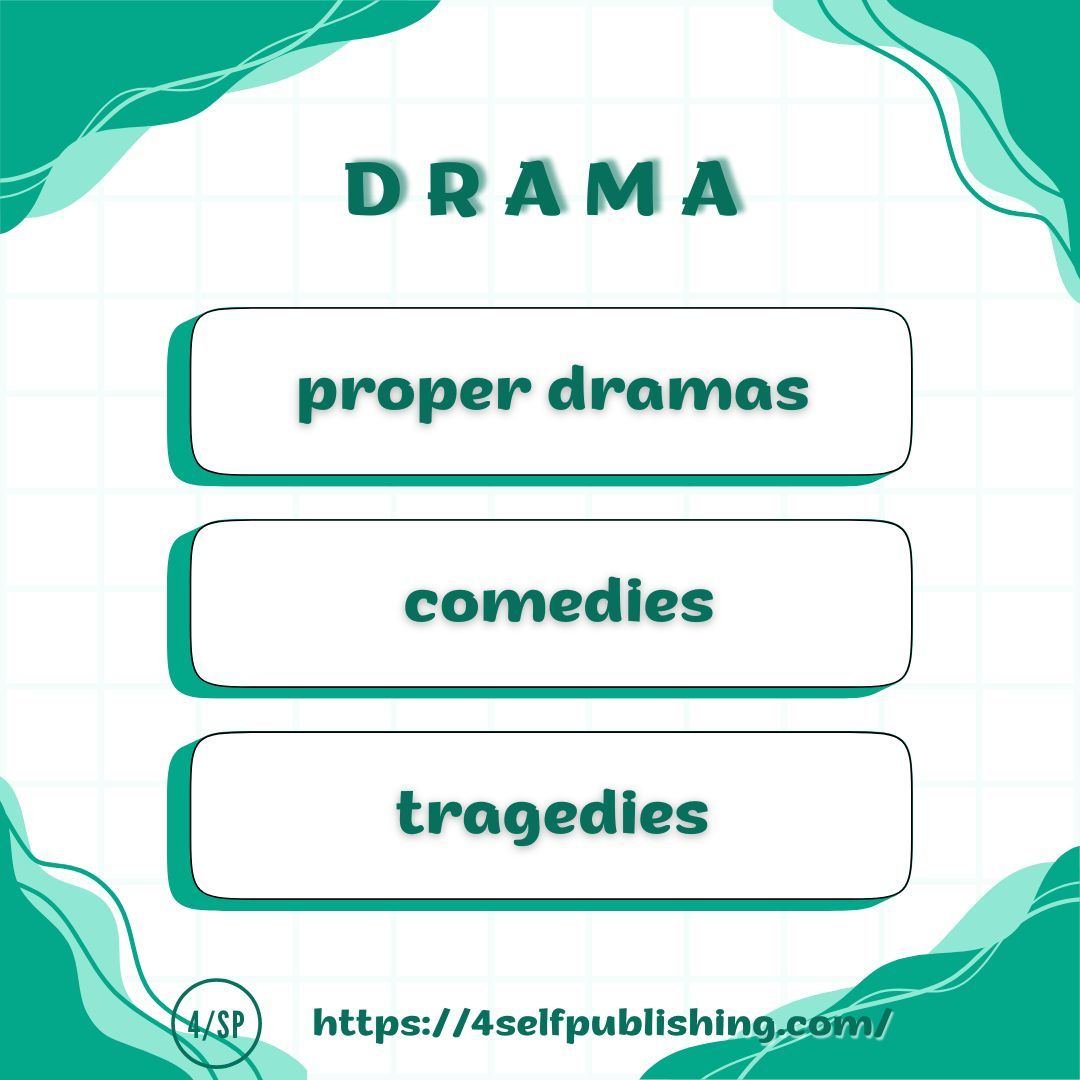
Among dramatic genres, we distinguish:
- Drama proper – often called tragicomedy, a serious work building tension;
- Comedy – characterized by lightness, humor, and an optimistic tone, exaggerating events or character traits to absurdity;
- Tragedy – dealing with serious ethical dilemmas, where the fate of the characters is inevitable and leads to disaster regardless of their decisions.
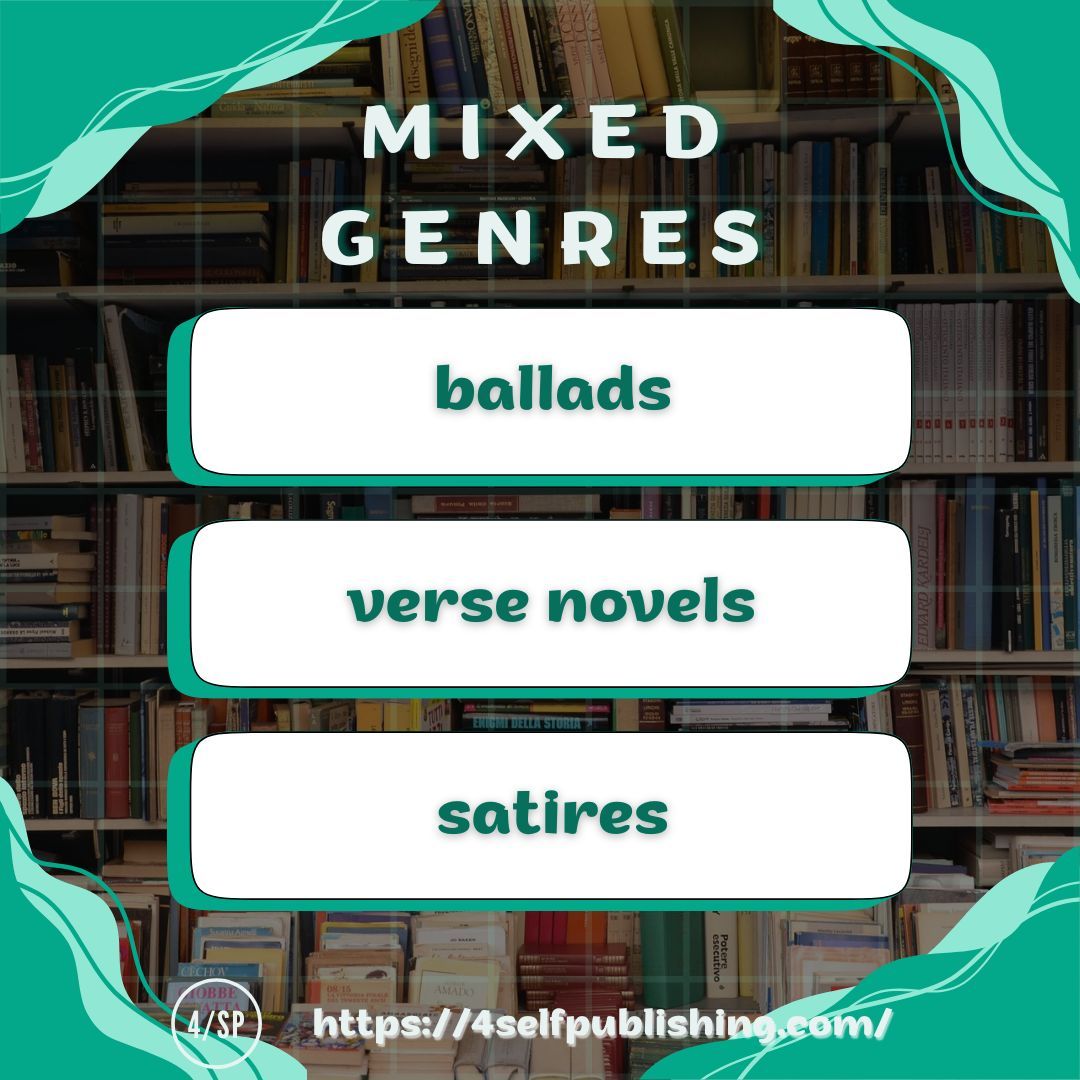
If you read books carefully, you have probably noticed that some content does not fit into any canon. They do not belong to any of the above genres. You can also encounter mixed genres, combining at least two others. The most common are:
- Ballad – combining elements of drama and epic, often related to legends or folklore;
- Poetic novel – combining epic, lyric, and drama elements, emphasizing the emotions of the main character and creating a mysterious atmosphere;
- Satire – combining lyric and epic, ridiculing human flaws, customs, and phenomena.
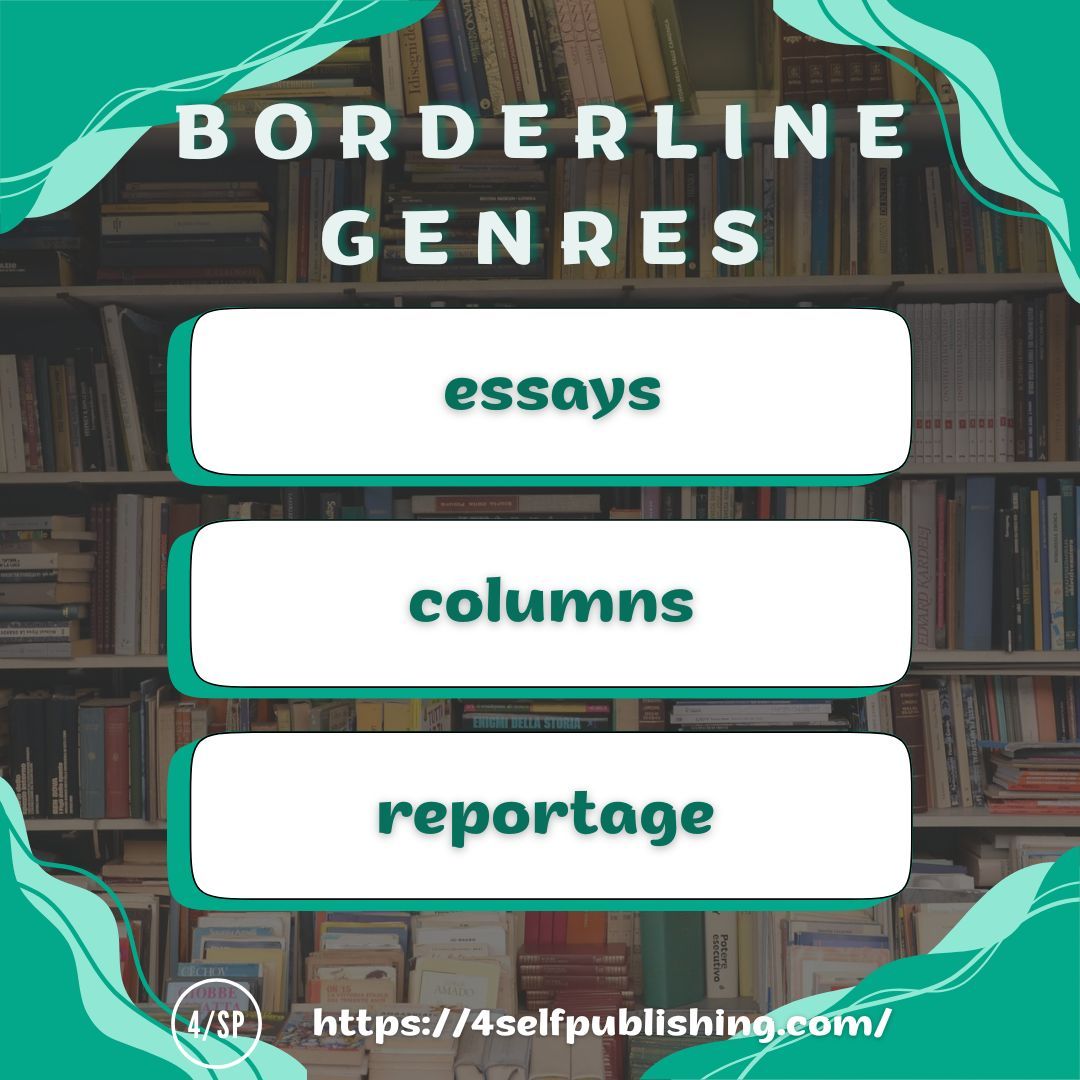
Literature experts also distinguish borderline genres, such as:
- Essay – a statement where the author presents reflections or analysis on a topic, aiming to inform or provoke thought;
- Column (feature article) – a journalistic work where the author humorously comments on various topics, often including anecdotes and subjective observations;
- Reportage – combining literary nonfiction with journalism, describing real events, people, or phenomena, presenting their context and related emotions.
You can also choose myths, film scripts, love songs, laments, free verse, farces, tragicomedies, melodramas… So you have plenty to choose from. Now you know how to classify your work. Keyboard in hand... start writing your work(s)!
